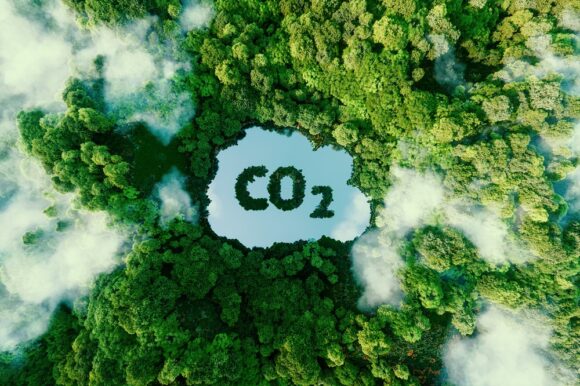Three energy corporations are partnering on a carbon- capture project with the hopes of dramatically reducing industrial carbon dioxide emissions in Louisiana, Gov. John Bel Edwards announced Wednesday.
ExxonMobil, CF Industries and EnLink Midstream have entered into an agreement with the aim to move 2 million metric tons of carbon dioxide annually _ equivalent to what would be produced by nearly 431,000 gas-powered cars driven for one year, according to the Environmental Protection Agency _ by capturing carbon emissions and storing them deep underground.
“This landmark project represents large-scale, real-world progress on the journey to decarbonize the global economy,” said Dan Ammann, president of ExxonMobil Low Carbon Solutions.
Captured emissions from the CF Industries ammonia production plant in Donaldsonville _ the top greenhouse gas industrial emitter in the state, based on Louisiana’s 2021 Greenhouse Gas Inventory report _ will be transported through EnLink’s existing pipeline network and “injected into deep, underground geologic formations” on ExxonMobil property in Vermillion Parish. Officials estimate the startup date to be in 2025.
ExxonMobil owns 125,000 acres in Vermilion Parish. The project team is still “planning and evaluating” exact injection location within the site.
Officials from all three companies and Edwards, a Democrat, touted the deal, describing it as an important step in reaching Louisiana’s goal of net zero carbon dioxide emissions by 2050.
“Today’s announcement of this unprecedented, large-scale, low-carbon partnership is a key milepost on Louisiana’s path toward a brighter future for our climate, our economy and our people,” Edwards said.
Carbon capture and storage projects are gaining traction since Congress approved $3.5 billion for them last year.
In a November 2021 report from the United Nations Intergovernmental Panel on Climate Change, the world’s top scientists said carbon capture and storage technology has to be part of the range of solutions to decarbonize and mitigate climate change. But they notably added that solar and wind energy and electricity storage are improving faster than carbon capture and storage.
Opponents of carbon capture and storage argue that projects pose threats to the public health of communities long plagued by air and water pollution. Critics say that by prolonging the lifespan of an existing industrial facility, it presents additional environmental harm by extending the amount of time it pollutes a community. In addition, because carbon capture would require more energy to power the equipment, it would result in more air pollution because the technology can only catch a portion of the carbon emitted by a facility.
Injection sites have generated controversy in Louisiana. Most recently, Livingston Parish enacted a moratorium on carbon-injection wells following public outcry, The Advocate reported. St. Helena Parish is considering a similar freez
Topics Louisiana
Was this article valuable?
Here are more articles you may enjoy.



 Wall Street Pushes Back After Activists Escalate Protests
Wall Street Pushes Back After Activists Escalate Protests  Hurricane Beryl: Insurers See Minimal Impact, Brace for Active Season
Hurricane Beryl: Insurers See Minimal Impact, Brace for Active Season  Marsh McLennan Agency to Acquire The Horton Group
Marsh McLennan Agency to Acquire The Horton Group  Progressive Q2 Net Income Skyrockets Over 320%
Progressive Q2 Net Income Skyrockets Over 320% 

